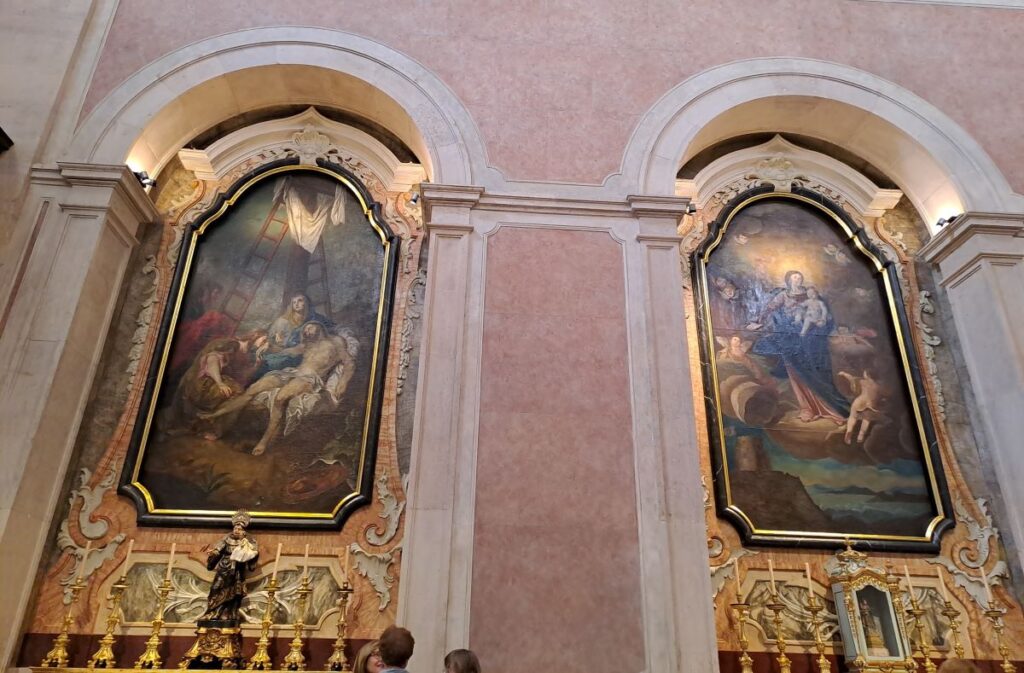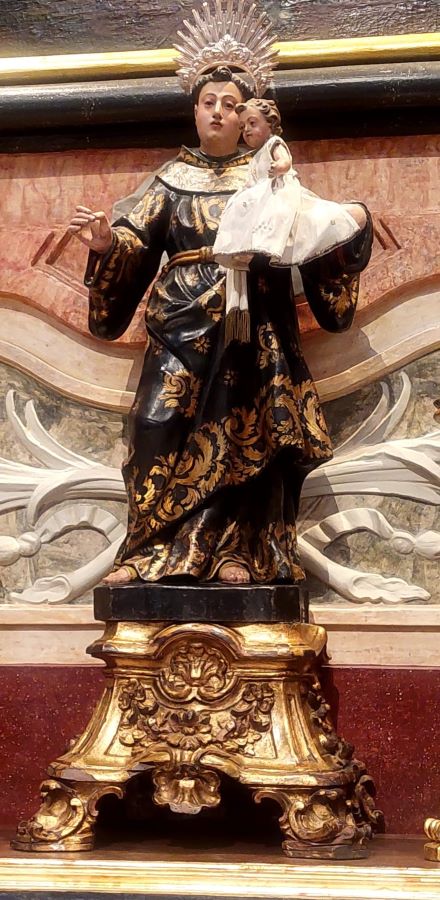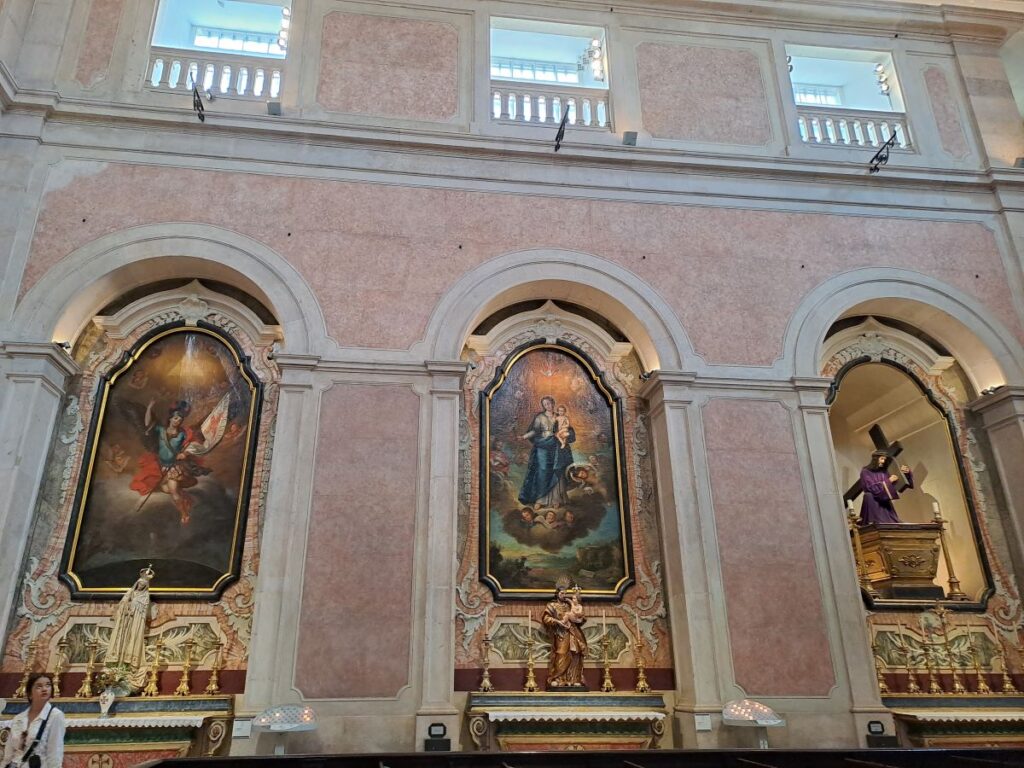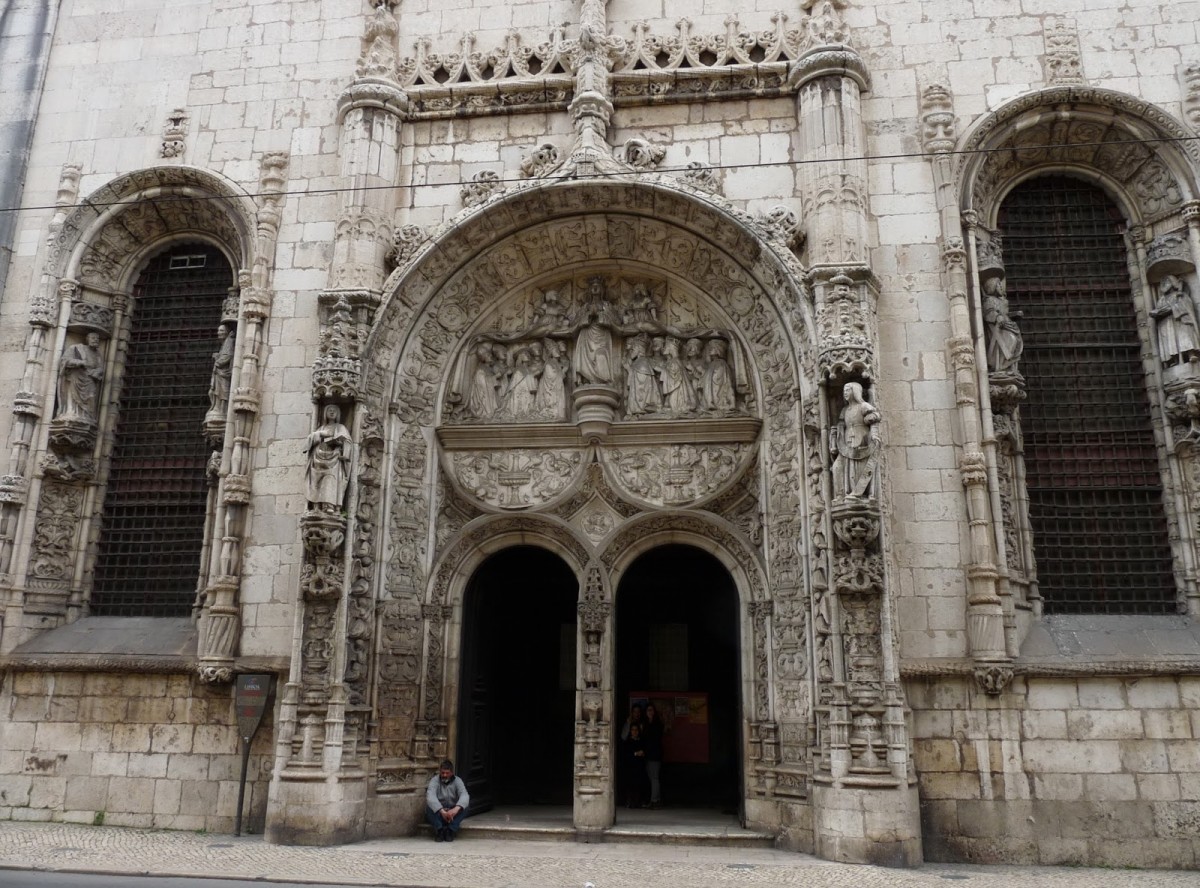The Church of Conceição Velha was the result of the Pombaline reconstruction following the 1755 earthquake, which destroyed the old Church of Our Lady of Mercy in Lisbon, an imposing church built in 1534, three times larger than the current one. The 16th-century portico, which was a side entrance to the original church in the Manueline style but with a Renaissance approach, survived.
On the tympanum, in bas-relief, we see Our Lady of Mercy or Virgin of the Mantle protecting the three stages of society (clergy on the left and the nobility on the right). The figure on the mainel represents Justice.
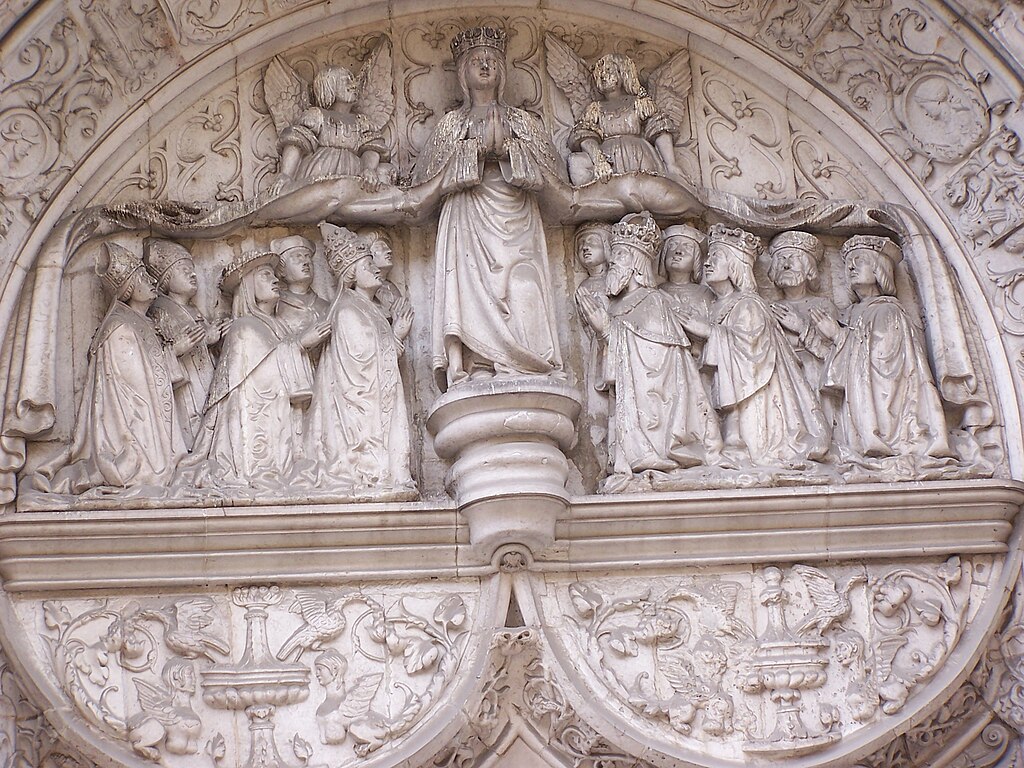
The main altar depicts Our Lady of the Conception, the patron saint of Portugal, in polychrome wood with rocaille features, by the sculptor José de Almeida. In the centre of the vaulted ceiling, in stucco in shades of blue, gold and ochre, by Félix da Rocha, is the Triumph of Our Lady of the Conception – an angel with a spear slaying a dragon on a globe. The Virgin stands on a lunar crescent, crowned by stars, being blessed by God.
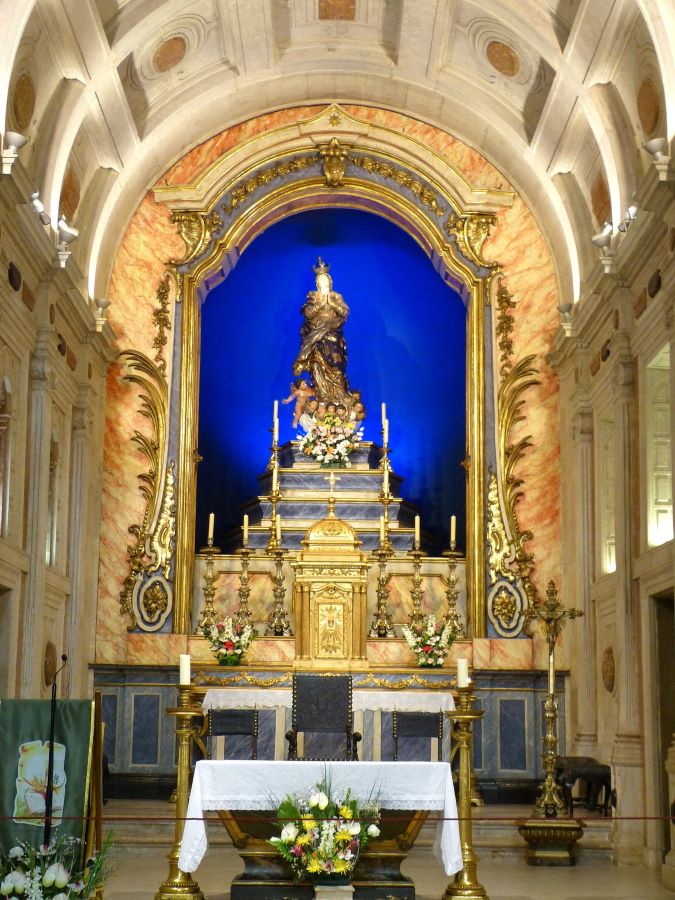
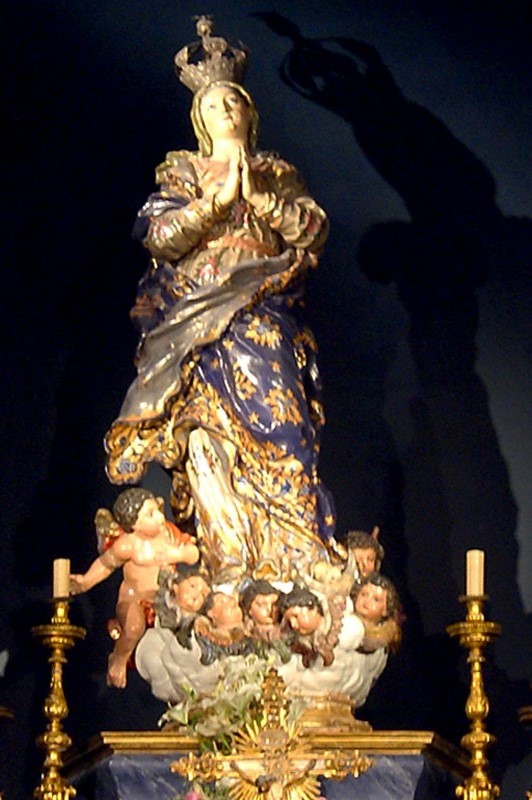
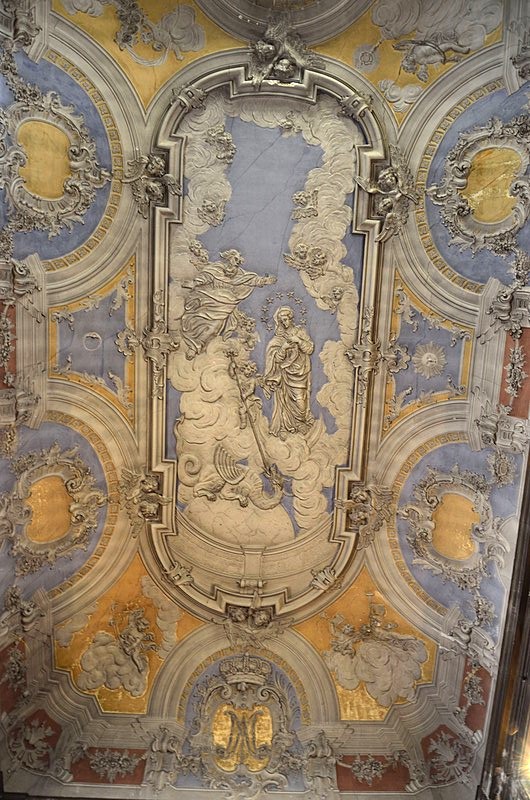
The emblem of the Order of Christ, which is on the triumphal arch of the chancel, is carved in stone but gilded, which suggests that it is made of wood. The sculptures that flank the arch, St Peter and St Paul, are made of wood, although they are painted to imitate stone. The current chancel used to be the side chapel of the Blessed Sacrament, built by Dona Simoa Godinho, a black woman from São Tomé and Príncipe, married to Luís de Almeida and a great benefactor of the Misericórdia.
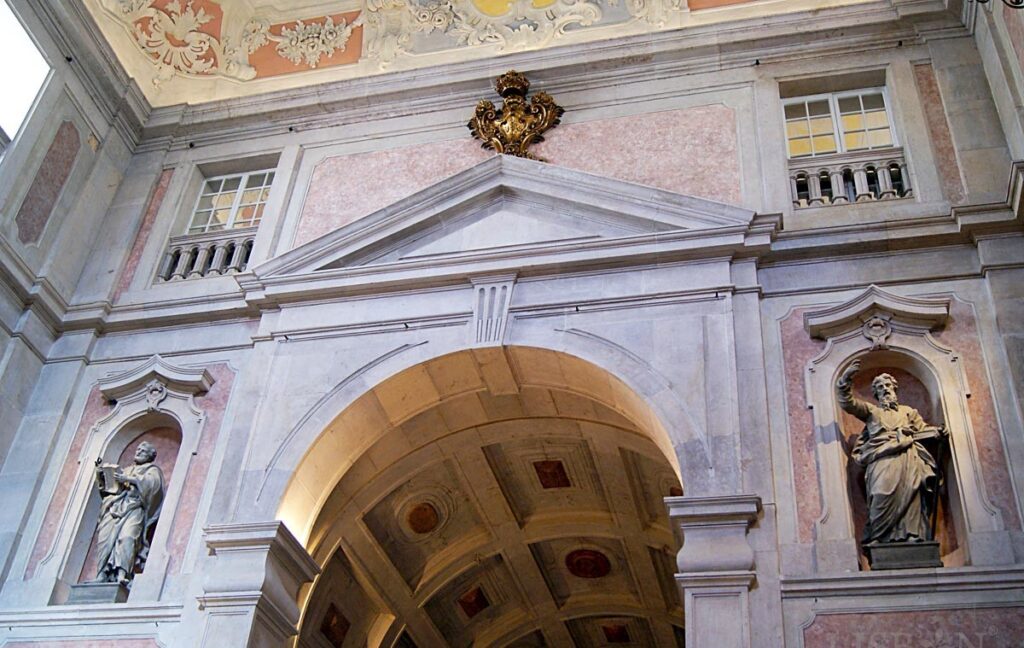
This church houses the original 15th century image of Our Lady of Belém or Restelo, commissioned by Prince Henry the Navigator for the Hermitage of the Order of the Freires de Cristo, in front of which navigators prayed before setting sail for the unknown. On 8 July 1497, Vasco da Gama prayed before embarking on the voyage of maritime discovery to India and, three years later, Pedro Álvares Cabral before the voyage that took him to Brazil.
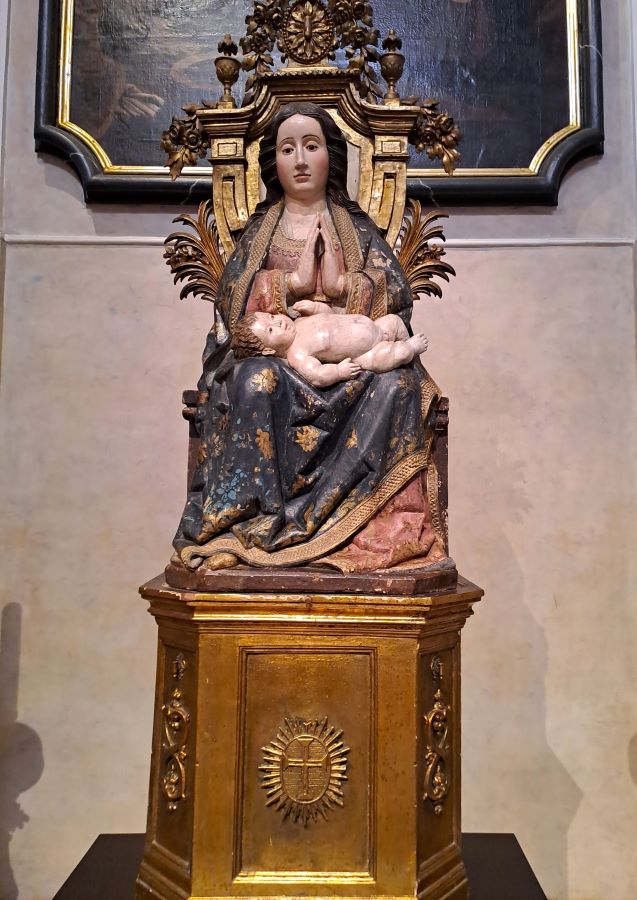
Worship of the image of the Lady of Atalaia dates back to the early 1500s, when there was a major outbreak of the black plague in Lisbon, and in 1507 a Brotherhood undertook to hold an annual river procession along the River Tagus. More than 500 years later, this procession still takes place today.
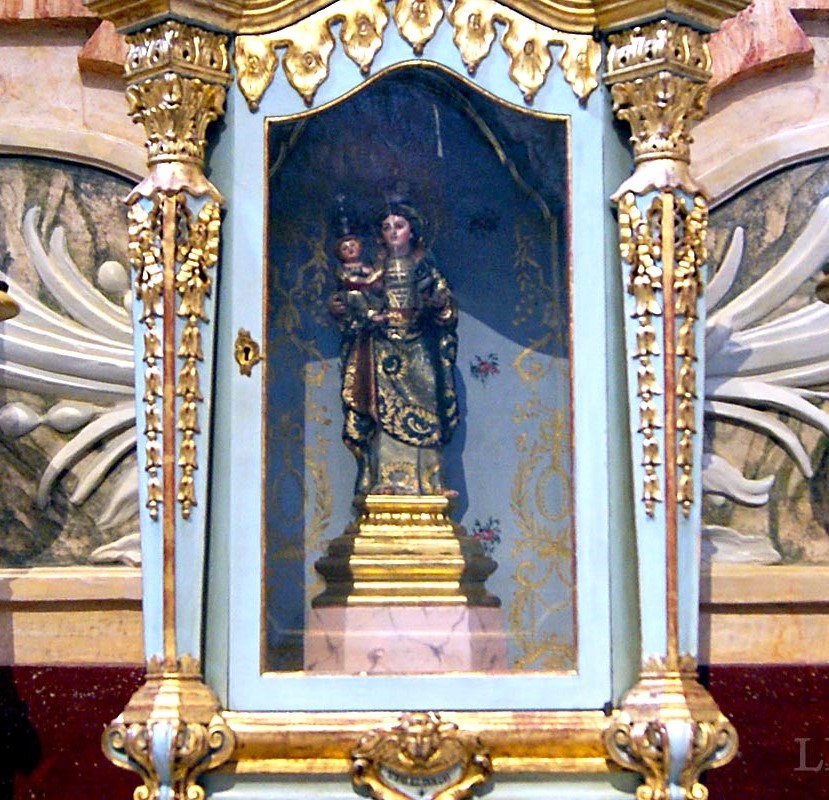
On the side altars you can see paintings of Our Lady of Mercy and St Michael the Archangel, both by Bruno José do Vale, the Last Supper by Joaquim Manuel da Rocha or Our Lady of Purity by Joana do Salitre, one of the few female painters of the 18th century.
